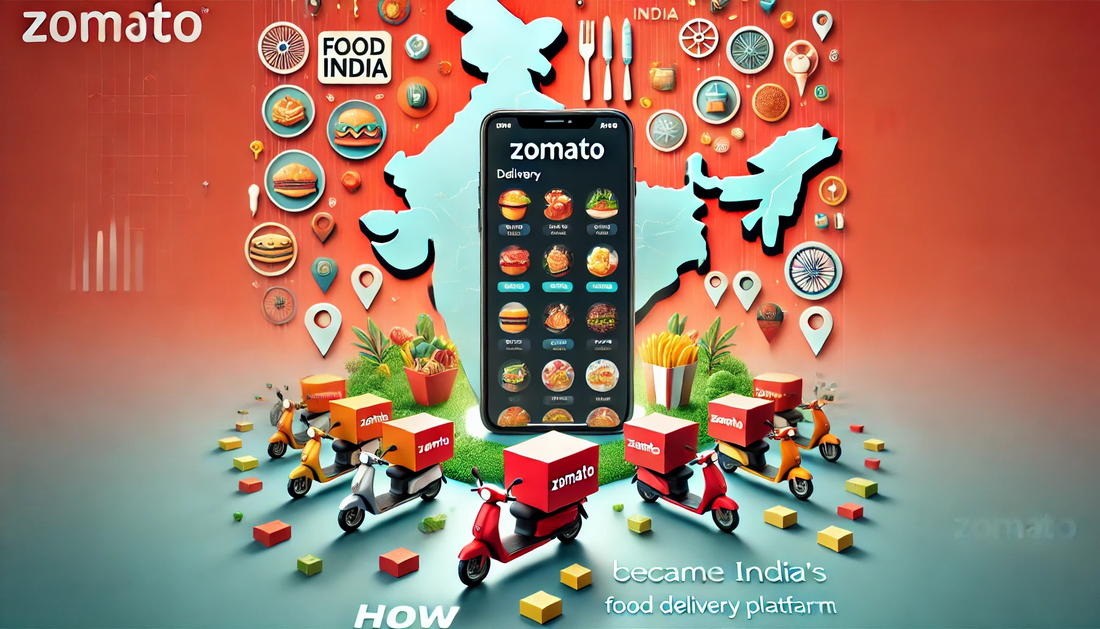In the bustling world of food delivery, Zomato stands as a beacon of success. From its humble beginnings to becoming India's leading food delivery platform, Zomato's journey is nothing short of inspirational. For startup founders, Zomato's story offers a treasure trove of insights and strategies.
Understanding the Market
Zomato's founders, Deepinder Goyal and Pankaj Chaddah, understood the Indian market's unique needs. They recognized the growing demand for convenient food delivery services. This market insight was crucial in shaping their business model.
Actionable takeaway: Conduct thorough market research. Understand your target audience's needs and preferences. Tailor your offerings to meet these demands effectively.
Building a Strong Brand
Zomato's branding strategy was pivotal to its success. The company focused on creating a strong, recognizable brand. Their quirky marketing campaigns and engaging social media presence helped them connect with their audience.
Actionable takeaway: Invest in building a strong brand identity. Use creative marketing strategies to engage with your audience. Consistency in branding can significantly enhance your market presence.
Leveraging Technology
Technology played a crucial role in Zomato's growth. The platform's user-friendly app and website made ordering food a seamless experience. Zomato continuously innovated, integrating AI and data analytics to enhance user experience.
Actionable takeaway: Embrace technology to streamline operations. Invest in developing a user-friendly platform. Use data analytics to understand customer behavior and improve service delivery.
Expanding Strategically
Zomato's expansion strategy was both aggressive and strategic. They initially focused on major Indian cities before expanding globally. This approach allowed them to establish a strong foothold in key markets.
Actionable takeaway: Plan your expansion carefully. Start by dominating local markets before considering global expansion. Ensure you have the resources and infrastructure to support growth.
Building Partnerships
Partnerships were integral to Zomato's success. Collaborating with restaurants, delivery partners, and payment gateways helped them offer a comprehensive service. These partnerships enhanced their value proposition.
Actionable takeaway: Forge strategic partnerships to enhance your offerings. Collaborate with stakeholders who can add value to your business. Strong partnerships can provide a competitive edge.
Focusing on Customer Experience
Zomato prioritized customer experience. They implemented features like real-time order tracking and customer reviews. This focus on customer satisfaction helped build trust and loyalty.
Actionable takeaway: Prioritize customer experience in your business model. Implement features that enhance convenience and satisfaction. Happy customers are more likely to become repeat customers.
Adapting to Change
Zomato's ability to adapt to changing market dynamics was crucial. They pivoted their business model during the COVID-19 pandemic, introducing contactless delivery and grocery services.
Actionable takeaway: Stay agile and adaptable. Be prepared to pivot your business model in response to market changes. Flexibility can help you navigate challenges and seize new opportunities.
Investing in Talent
Zomato's success is also attributed to its talented team. The company invested in hiring skilled professionals and fostering a culture of innovation. This focus on talent helped drive their growth.
Actionable takeaway: Invest in building a talented team. Foster a culture of innovation and collaboration. A skilled workforce can propel your startup to new heights.
Learning from Failures
Zomato faced its share of challenges and failures. However, they viewed these setbacks as learning opportunities. This resilience and willingness to learn were key to their success.
Actionable takeaway: Embrace failures as learning opportunities. Analyze setbacks to identify areas for improvement. Resilience and a growth mindset are essential for long-term success.
Conclusion
Zomato's journey from a startup to a market leader is a testament to strategic planning, innovation, and resilience.
For startup founders, their story offers valuable lessons and actionable strategies. By understanding the market, building a strong brand, leveraging technology, and focusing on customer experience, startups can carve their path to success.
Remember, every successful business starts with a vision. With the right strategies and a relentless pursuit of excellence, your startup can achieve remarkable success, just like Zomato.










